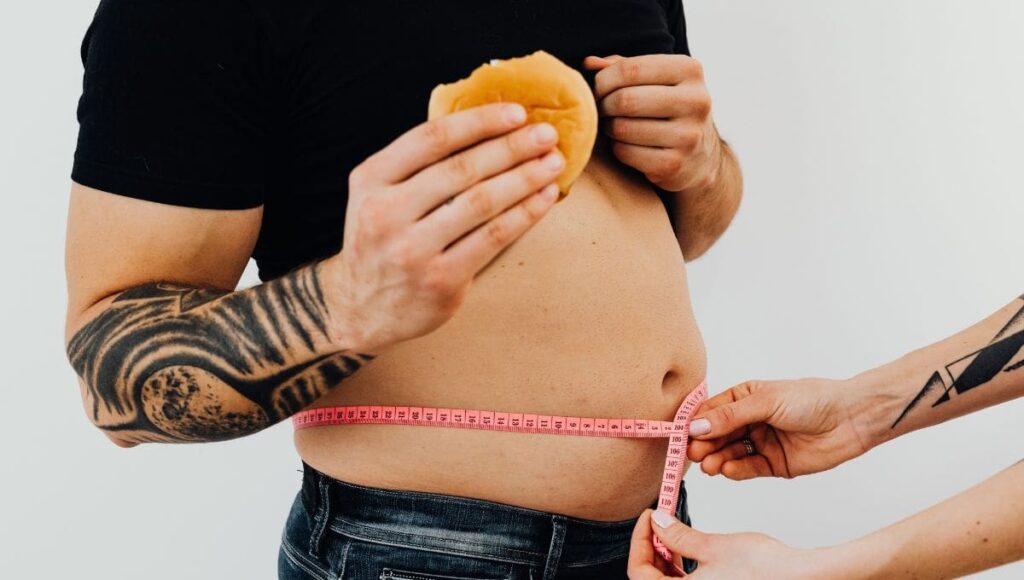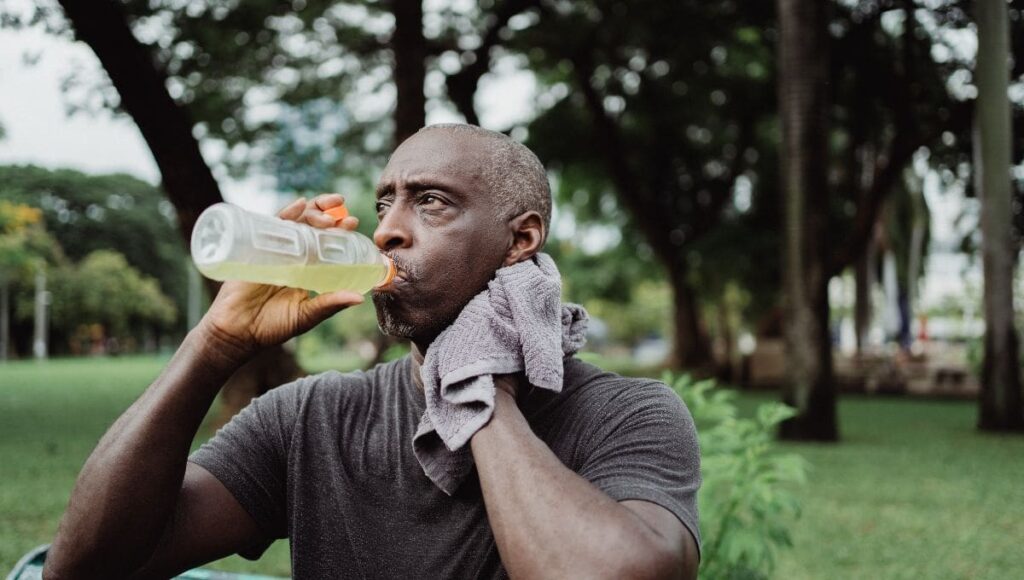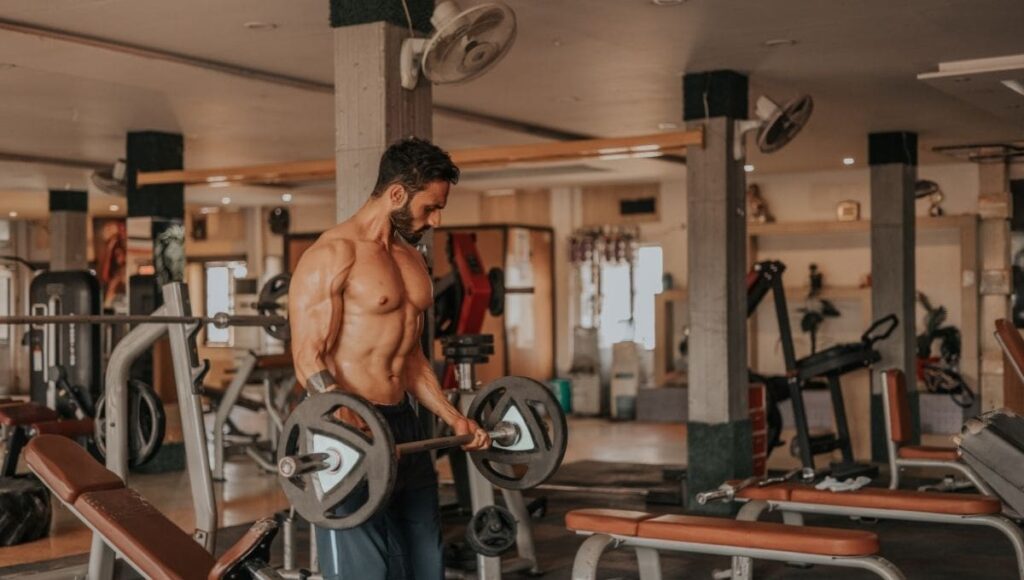These are the top 5 best foods to lose belly fat according to scientific studies.
Losing belly fat is a common fitness goal, and there is a wealth of information out there about the best foods to achieve it. However, some of the suggested foods may not be as effective as claimed. If you Google the top 5 best foods to lose belly fat, do you know what the answer would be? Lemon water, cayenne pepper, apple cider vinegar, chia seeds, and kombucha.
But, according to Jeremy Ethier, that is simply not true. He is a kinesiologist and fitness trainer, co-founder of Built With Science. His YouTube channel has over 4 million subscribers and he delivers clear information with sound background research.
Keep reading below to find out what are the top 5 best foods to lose belly fat.
The Top 5 Best Foods to Lose Belly Fat
First and foremost, it is important to note that if you simply eat the foods mentioned below, it does not guarantee that you will lose only belly fat. Targeting belly fat reduction naturally can be challenging due to the way our bodies store and burn fat. While some specific exercises or foods may claim to target belly fat, the reality is that spot reduction is not a scientifically supported concept.
What will happen, though, is that you will get easier into a caloric deficit, which is the basis of losing weight and burning fat.
What is Caloric Deficit and How Much Is It Safe?

With that out of the way, let’s cut through the noise and examine the science-backed foods that can genuinely aid in losing belly fat and overall weight loss. Here is what Ethier had to say about it.
- Low-Calorie Density Foods: Low-calorie density foods are those that offer a significant weight and volume for relatively few calories. People who incorporate these foods into their diets tend to consume fewer calories overall but feel more satisfied with the amount of food they eat. Some examples of low-calorie density foods include most fruits, vegetables, and low-fat options. While it’s essential to limit high-calorie density foods, there’s no need to completely eliminate them. Instead, focus on adding more low to moderate-calorie density foods to your meals. For instance, swap high-sugar granola for whole grain cereal with fruit during breakfast.
- Lean Proteins: Proteins play a crucial role in belly fat loss. The thermic effect of food refers to the number of calories the body burns while digesting the food. Lean proteins, such as egg whites, shrimp, protein powder, low-fat Greek yogurt, extra lean ground beef, chicken breast, turkey, tofu, and white fish, are particularly effective for fat loss. Not only do they aid in maintaining or building muscle while losing fat, but they also contribute to a feeling of fullness. Prioritize lean proteins that offer higher protein content with fewer calories to optimize your fat loss journey.
- Omega-6 PUFA and Omega-3 PUFA: Fats are essential for overall health and hormone regulation, but the types of fats consumed can impact belly fat accumulation. Moderate the intake of saturated fats from sources like bacon, cheese, butter, cream, and fatty meats. Instead, focus on incorporating more fats rich in omega-6 polyunsaturated fatty acids (PUFA) found in nuts, seeds, and seed oils. Additionally, consider consuming omega-3 PUFA from sources such as salmon, tuna, and flaxseed, which not only support general health but also offer other health benefits.
- Hydration and Sweeteners: Staying hydrated is crucial for weight loss, but the type of beverage matters. In a study comparing water with non-nutritive sweeteners, the group that consumed the sugar-free beverages experienced significantly greater weight loss and better long-term weight maintenance. The use of non-nutritive sweeteners might have helped reduce cravings for sugary treats, leading to better adherence to the weight loss program.
- Personalized Approach: While the aforementioned foods offer benefits, it’s essential to find a diet that you enjoy and can stick to long-term. While some foods might be scientifically proven to aid in weight loss, forcing yourself to eat them can be counterproductive. Instead, build a diet around your favorite foods while incorporating elements from the science-backed options. Focus on choosing your favorite foods from each category and adding a few treats in moderation. By customizing your diet in this way, you’ll be more likely to stay committed and achieve sustainable results.
 Source: Karolina Grabowska on Pexels
Source: Karolina Grabowska on PexelsThe Literal Most Effective Exercise for Reducing Visceral Belly Fat
In conclusion, when aiming to lose belly fat and achieve overall weight loss, focusing on the right foods is crucial. Incorporating low-calorie density foods, lean proteins, healthy fats, hydration with non-nutritive sweeteners, and a personalized approach can help you achieve your fitness goals effectively and enjoyably. Remember, it’s not about following the latest trends but finding a balanced and sustainable approach to nutrition and exercise that works best for you. Always consult with a healthcare professional or registered dietitian before making significant changes to your diet or exercise routine.
For a full understanding of Ethier explanation, watch his video below.
7 Best Low-Carb Breakfast Foods to Help Lose Fat
Love Handles: How to Get Rid of the Hardest Fat to Lose
How to Increase Your Metabolism
Metabolism is important for several reasons:
- Energy production: Metabolism is responsible for converting the food we eat into energy that our cells can use. This energy is necessary for all bodily functions, from breathing to walking.
- Tissue maintenance: Metabolism is also responsible for building and repairing tissues in the body. This includes the growth and repair of muscles, bones, and organs.
- Waste removal: Metabolism helps to eliminate waste products from the body, such as carbon dioxide, urea, and other toxins.
- Regulation of body weight: Metabolism plays a key role in regulating body weight. A slow metabolism can make it more difficult to lose weight, while a fast metabolism can help to burn more calories.
- Hormone production: Metabolism is responsible for the production of hormones, which are chemical messengers that regulate various bodily functions.
What Happens When You Try Intermittent Fasting for 30 Days?
The Only 5 Exercises You Need to Look Super Jacked
11 Golden Rules to Build Muscle Whilst Losing Fat

The process of body recomposition typically involves the following key components:
- Resistance Training: Engaging in regular strength training exercises helps stimulate muscle growth and development. It involves performing exercises using weights, resistance bands, or bodyweight to challenge and overload the muscles, leading to hypertrophy (muscle growth) over time.
- Caloric Balance: Body recomposition requires paying attention to calorie intake and expenditure. To lose body fat while gaining muscle, you generally need to maintain a slight caloric deficit (consuming fewer calories than you burn) while ensuring an adequate intake of nutrients to support muscle growth and recovery.
- Protein Intake: Sufficient protein consumption is crucial for muscle building and repair. A higher protein intake helps support muscle protein synthesis and can aid in preserving lean muscle mass during the fat-loss phase.
- Cardiovascular Exercise: Incorporating cardio exercises, such as running, cycling, or swimming, can help increase calorie expenditure and support overall fat loss. However, it’s important to balance cardiovascular exercise with resistance training to ensure muscle preservation and growth.
- Progressive Overload: To continue making progress during body recomposition, it’s essential to progressively increase the intensity, volume, or resistance of your workouts over time. This progressive overload principle challenges your muscles and stimulates further growth.
It’s important to note that body recomposition is a gradual process that requires consistency, patience, and individual adjustments based on your body’s response. It may not happen as quickly as solely focusing on fat loss or muscle gain, but it can lead to long-term changes in body composition, overall strength, and aesthetics. Consulting with a qualified fitness professional or nutritionist can provide personalized guidance to help you achieve your body recomposition goals safely and effectively.
 Source: Dollar Gill on Unsplash
Source: Dollar Gill on UnsplashHow To Make The Biggest Visual Change To Your Body Quickly
How Many Calories Should You Eat to Lose Fat?
10 Proven Ways to Speed Up Fat Burning
Weight loss plateaus occur when a person’s weight loss progress slows down or stalls despite their continued efforts to lose weight. There are several reasons why this can happen:
- Metabolic adaptation: When you lose weight, your body adapts to the lower calorie intake and can start burning fewer calories at rest. This means that as you lose weight, your body requires fewer calories to maintain your new weight, which can cause your weight loss progress to slow down.
- Changes in physical activity: If you’ve been doing the same type and amount of exercise for a while, your body may become used to it and not burn as many calories as before. Additionally, you may experience fatigue or injury, which can cause you to decrease your physical activity level.
- Calorie intake: As you lose weight, you need fewer calories to maintain your weight. If you don’t adjust your calorie intake accordingly, you may start to consume too many calories, which can slow down or stall your weight loss progress.
- Hormonal changes: Hormonal changes, such as fluctuations in insulin levels, can affect weight loss progress. For example, insulin resistance can make it more difficult to lose weight, especially around the midsection.
- Psychological factors: Stress, lack of sleep, and other psychological factors can affect weight loss progress. Stress can increase levels of cortisol, which can promote fat storage, while lack of sleep can disrupt hormones that regulate appetite and metabolism.
To overcome weight loss plateaus, it’s important to reassess your diet, exercise routine, and lifestyle habits to identify areas where you can make adjustments. This can include increasing physical activity, adjusting calorie intake, and managing stress and sleep. Additionally, consulting with a healthcare professional or registered dietitian can provide personalized recommendations to help you reach your weight loss goals.
11 Golden Rules for Fat Loss from Thomas DeLauer
How Many Steps Should You Walk Every Day to Lose Fat?
How Long Will It Take To See Your Six-Pack?
9 Habits Killing Your Testosterone Levels
Image Sources
"lose" - Google News
July 21, 2023 at 12:30AM
https://ift.tt/G2SOqNd
The Top 5 Best Foods to Lose Belly Fat - BOXROX
"lose" - Google News
https://ift.tt/2ihDpHV https://ift.tt/GW1nwth
Bagikan Berita Ini














0 Response to "The Top 5 Best Foods to Lose Belly Fat - BOXROX"
Post a Comment